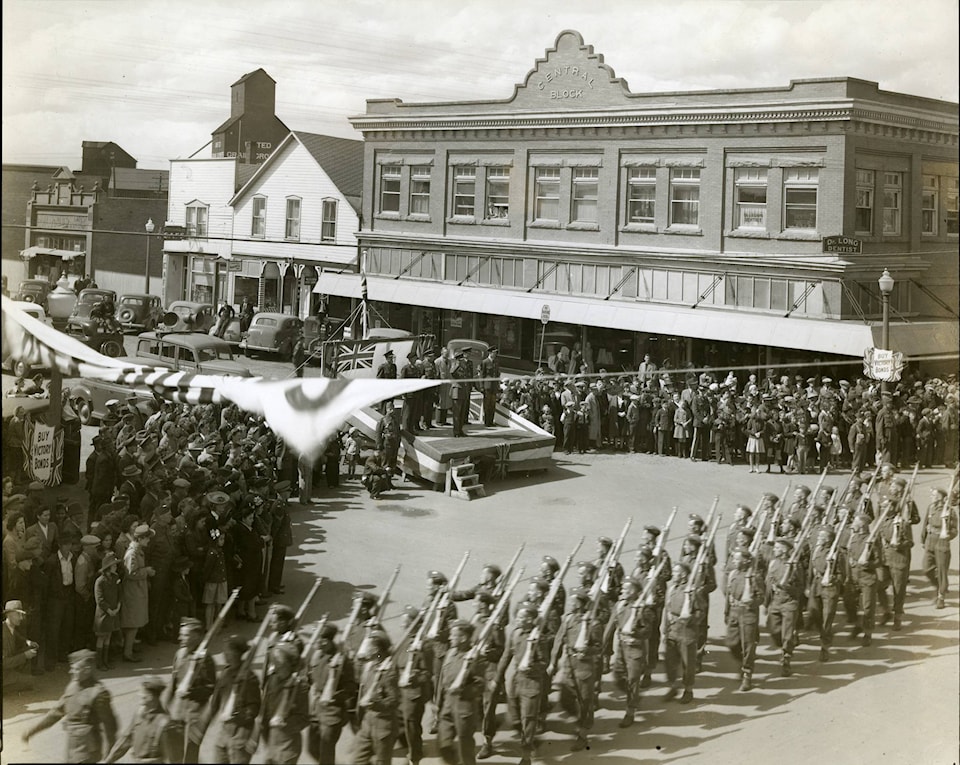Sept. 2 marked the 75th anniversary of the end of the Second World War.
On that day, in 1945, the Empire of Japan officially surrendered to the Allied Forces. Canada was represented at the ceremony by Col. Lawrence Moore Cosgrove, a decorated military officer and diplomat.
Cosgrove was a veteran of the First and Second World Wars. He had been in the trenches, literally next to Lt.-Col. John McCrae, when McCrae wrote his famous poem, In Flanders Fields, on May 3, 1915.
Cosgrove had been left partially blind from a wound suffered during his First World War service. Hence, when he went to sign the 1945 official surrender document on behalf of Canada, he accidentally signed on the wrong line.
The error was quickly corrected by Gen. Dwight MacArthur’s chief of staff, who changed the labelling of the lines.
Despite the historical importance of the 75th anniversary of the official end of the Second World War, there was little public notice this year.
That may be because a lot of media attention these days is focused on the COVID-19 pandemic and/or the American presidential election.
Actually, in Canada, there hadn’t been a whole lot of attention to the event, even in September 1945. Most Canadian involvement during the Second World War had been concentrated in Europe.
Hence, the official surrender of Germany on May 8, 1945 (officially dubbed V-E Day), had been greeted with widespread celebration across Canada and in Red Deer.
There had been much less Canadian involvement in the Pacific Theatre and the war against Japan. Nevertheless, Canadians had been part of the defence of Hong Kong in December 1941.
One Red Deer native, Horace “Gerry” Gerrard, was taken as a prisoner of war at the end of the battle on Christmas Day.
Also, Tom Brock, of Joffre, who had been serving with the Fleet Air Arm of the Royal Navy, had become a Japanese prisoner of war in May 1942. Both men suffered horribly while interned.
The initial Japanese surrender took place on Aug. 15, 1945, a day dubbed as V-J (Victory Over Japan) Day. While there were not the large public celebrations that were seen on V-E Day, there was still a gathering of thanksgiving on the Civic Square (now City Hall Park), followed by a public dance on Gaetz Avenue.
There were some church services celebrating the formal return of peace on or after Sept. 2, 1945, but no public civic celebration or gatherings.
Nevertheless, throughout the war, more than 1,100 men and women from Red Deer and district served in the military. Many locals were part of the 78 Battery, Royal Canadian Artillery, Red Deer’s oldest continuous militia unit.
A great many others joined the 14 Calgary Tanks. Overall, large numbers of people from Red Deer and area could be found in several units in virtually every branch of service, including the army, air force and navy.
Also, shortly after the war started in September 1939, a major airbase was established at Penhold. Initially, it served as a manning depot for the Royal Canadian Air Force. However, it soon became a major training centre for the British Royal Air Force.
Moreover, the Canadian government decided to make Red Deer a major army training centre. Hence, in the summer of 1940, a militia training centre was built on a large site north of 55th Street.
This was later expanded and converted into the A-20 Army Training Camp. At various times, more than 1,200 men and women were stationed at the facility.
With all the military training facilities in and around Red Deer, at one point, there were as many military personnel in the community as civilians.
At the end of the war in 1945, the official record showed that 53 local young men had lost their lives while in service.
A remembrance of their sacrifice was added to the Red Deer cenotaph in 1949. There is also a large commemorative plaque in the foyer of the Memorial Centre, which is actually one of the old drill halls of the A-20 Army Camp.
Red Deer historian Michael Dawe’s column appears Wednesdays.
